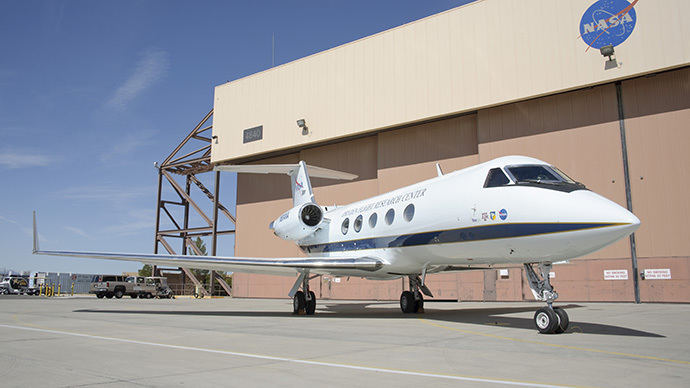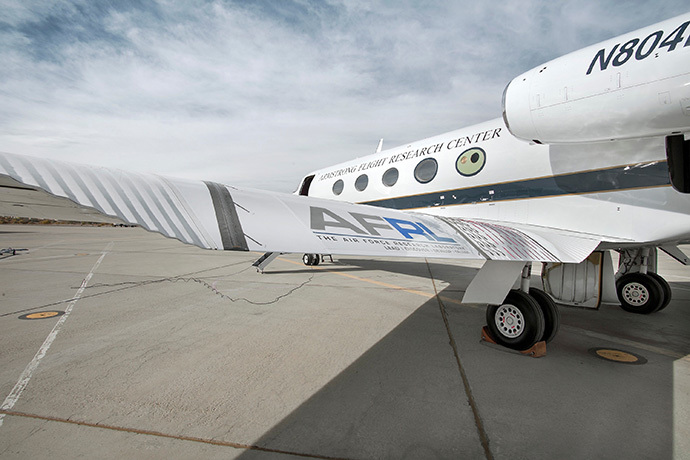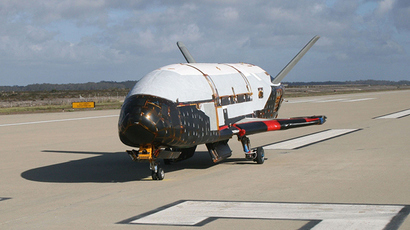NASA tests ‘revolutionary’ shapeshifting wings for nextgen aircraft

In a joint project with the US Air Force, NASA has for the first time tested in a real flight its new technological marvel – a shape-shifting wing flap that can potentially reduce noise and improve aerodynamic and fuel efficiency of aircraft.
NASA has successfully conducted the first test of a “revolutionary shape changing aircraft flap” as part of the green aviation project flown at NASA's Armstrong Flight Research Center in Edwards, California, the agency said in a statement.
The new flaps designed and built by FlexSys, Inc, were commissioned on behalf of the Adaptive Compliant Trailing Edge (ACTE) project, a combined research of NASA and the Air Force Research Laboratory (AFRL).
The experiment is being carried out on a modified Gulfstream III business aircraft. The project involved replacement of both of the G-III's conventional 19-foot-long aluminum flaps with shape-changing flaps that form continuous flexible surfaces.
“FlexSys developed a variable geometry airfoil system called FlexFoil that can be retrofitted to existing airplane wings or integrated into brand new airframes,” NASA said in a press release.
Currently on traditional airplanes when flaps are lowered, gaps appears between the edge and sides of the flaps as well as the wing surface. The new flaps are gapless thus should eliminate a major source of airframe noise generation.
“This flight test is one of the NASA Environmentally Responsible Aviation (ERA) Project’s eight large-scale integrated technology demonstrations to show design improvements in drag, weight, noise, emission and fuel reductions," said Fay Collier, ERA project manager at NASA’s Langley Research Center in Hampton, Virginia.

NASA expects the new technology to make future aircraft lighter, more efficient, and quieter, while it also has the potential to save hundreds of millions of dollars annually in fuel costs.
“This past summer researchers replaced an airplane’s conventional aluminum flaps with advanced, shape-changing assemblies that form seamless bendable and twistable surfaces. Flight testing will determine whether flexible trailing-edge wing flaps are a viable approach to improve aerodynamic efficiency and reduce noise generated during takeoffs and landings,” NASA said in a press release.
In the first test, however, the experimental flaps were locked at one position and different settings will be tested on subsequent flights over the next months.
“We have progressed from an innovative idea and matured the concept through multiple designs and wind tunnel tests, to a final demonstration that should prove to the aerospace industry that this technology is ready to dramatically improve aircraft efficiency,” said AFRL Program Manager Pete Flick.














